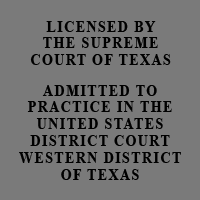Texas Carbon Monoxide Lawyer Handles Fatal Carbon Monoxide Poisoning Lawsuits, Hypoxia Carbon Monoxide Poisoning Lawsuits, and Smoke Inhalation Lawsuits by Texas Carbon Monoxide Poisoning Lawyer Jason S. Coomer
Texas Carbon Monoxide Poisoning Lawyer, Jason Coomer, handles fatal carbon monoxide lawsuits and catastrophic brain injury carbon monoxide lawsuits where defective products, dangerous work places, toxic buildings, and poisonous homes and motels have caused carbon monoxide poisoning. If you have been seriously injured or lost a loved one from carbon monoxide poisoning, Texas Carbon Monoxide Lawyer Jason Coomer provides free online evaluations of Hypoxia and Fatal Carbon Monoxide Lawsuits. Feel free to submit an inquiry through our contact form or send an e-mail for a Free Online Review of your potential carbon monoxide lawsuit by a Texas carbon monoxide lawyer. Additionally, please feel free to go to the following web pages for more information on Texas House Fire Claims, Texas Hypoxia Brain Injury Claims, and Texas Smoke Inhalation Claims.

Carbon Monoxide Gas and Carbon Monoxide Poisoning Lawsuits
Carbon Monoxide is a colorless, odorless, tasteless, and poisonous gas that is created be internal-combustion engines. Carbon Monoxide can be extremely dangerous and can cause death or serious injuries, if inhaled by people or animals. Dangerous conditions include a motor vehicle running in an enclosed area such as a garage, exhaust created by a boat, or a power generator running inside a home or garage. Because it is a colorless and odorless gas, it is not always apparent when carbon monoxide is present or may be a potential danger. The presence of carbon monoxide can sometimes be determined by the symptoms of carbon monoxide poisoning including headaches, fatigue, nausea and dizziness.
If carbon monoxide poisoning is not caught in its early stages it can lead to passing out, brain damage, and even death. Thus, it is extremely important to be aware of heaters, generators, water heaters, and other household appliances that can cause carbon monoxide poisoning. These if left on over night can incapacitate everyone in a home, tent, or cabin and prevent them from getting out of harm's way. Domestic carbon monoxide poisoning can be prevented by the use of household carbon monoxide detectors.
Carbon Monoxide Lawyers Help Victoms of Carbon Monoxide Poisoning
Carbon monoxide poisoning occurs after people or animals inhale carbon monoxide gas. Carbon monoxide (CO) is a product of combustion of organic matter under conditions of restricted oxygen supply, which prevents complete oxidation to carbon dioxide (CO2). Carbon monoxide is colorless, odorless, and tasteless, and is often difficult for people to detect.
Carbon monoxide is a significantly toxic gas with poisoning being the most common type of fatal poisoning in many countries. Symptoms of mild poisoning include headaches, fainting, and flu-like effects; larger exposures can lead to significant toxicity of the central nervous system and heart. Following a significant poisoning, cognitive impairments, apathy, depression, headaches and dizziness often occurs. Carbon monoxide can also have severe effects on the fetus of a pregnant woman.
The mechanisms by which carbon monoxide produces toxic effects are not yet fully understood, but hemoglobin, myoglobin, and mitochondrial cytochrome oxidase are thought to be compromised. Treatment largely consists of administering 100% oxygen or hyperbaric oxygen therapy.
If you have any questions about carbon monoxide poisoning, feel free to send an e-mail to FatalCarbonMonoxideLawsuit@texaslawyers.com.
Carbon Monoxide Poisoning Lawyers Investigate Sources of Carbon Monoxide Poisoning
Many apartments, condominiums, motels, and other living environments have defective HVAC systems, appliances, and ventalation problems that can cause carbon monoxide poisoning. These living enviroments can also catch fire causing smoke inhalation dangers. When an unexpected death or severe toxic exposure occurs, it is important to have a carbon monoxide lawyer investigate the cause of the toxic exposure. This investigation can help prevent future similar accidents as well as seek compensation for medical expenses or an unnecessary and wrongful death.
Many businesses use ovens, forklifts, and other equipment that create carbon monoxide. These businesses if in a strip mall or other enclosed areas can cause carbon monoxide poisoning for neighboring businesses and employees. If you, your employees, or your customers are experiencing headaches, fatigue, nausea, and dizziness, you might want to test for carbon monoxide gas in your environment as well as investigate the use of any combustion engines or equipment that may create carbon monoxide gas as well as the ventilation system of your work place.
Carbon Monoxide Poisoning and Smoke Inhalation Can Cause Serious Injuries and Death
Smoke inhalation from an accidental fire can cause difficulty breathing, carbon monoxide poisoning, and other toxic effects that can result in serious injuries or even death. Smoke inhalation occurs when a person breathes in smoke or the products of combustion during a fire. The fire not only uses the surrounding oxygen in the air taking the oxygen that humans need to breathe, but through burning or combustion (the rapid breakdown of a substance by heat) creates smoke which is a mixture of heated particles and gases that are created by burning.
It is impossible to predict the exact composition of smoke produced by a residential fire or industrial fire as every accident fire is different. The products being burned, the temperature of the fire, and the amount of oxygen available to the fire all make a difference in the type of smoke produced. This is especially true when furniture, appliances, and other items made up of plastic or other chemicals is burned. The resulting smoke can be filled with irritants or toxins and result in serious respiratory problems or even death.
Smoke inhalation can damage the body by simple asphyxiation (lack of oxygen), chemical irritation, chemical asphyxiation, or a combination of these. Combustion can use up the oxygen near the fire and lead to death when there is no oxygen for a person to breathe. Smoke itself can also contain products that do not cause direct harm to a person, but they take up the space that is needed for oxygen. Carbon dioxide acts in this way.
Combustion can also result in the formation of chemicals that cause direct injury when they contact the skin and mucous membranes. These substances disrupt the normal lining of the respiratory tract. This disruption can potentially cause swelling, airway collapse, and respiratory distress. Examples of chemical irritants found in smoke include sulfur dioxide, ammonia, hydrogen chloride, and chlorine.
A fire also can produce compounds that do damage by interfering with the body's oxygen use at a cellular level. Carbon monoxide, hydrogen cyanide, and hydrogen sulfide are all examples of chemicals produced in fires that interfere with the use of oxygen by the cell during the production of energy. If either the delivery of oxygen or the use of oxygen is inhibited, cells will die.
Symptoms and Treatment of Smoke Inhalation and Carbon Monoxide
Smoke inhalation can cause health problems that result in coughing, shortness of breath, hoarseness, headaches, changes in mental status, changes in skin coloration, and passing out. The first step in treating a person suffering from smoke inhalation is to remove the person from the smoke-filled or toxic environment to a location with clean air. The second step is to start CPR and make sure that they are getting oxygen. Oxygen may be applied with a nose tube, mask, or through a tube down the throat. If the patient has signs and symptoms of upper airway problems (hoarseness), they will most likely be intubated. The doctor places a tube down the throat to keep the airway from closing due to swelling. If the patient has respiratory distress or mental status changes, they may also be intubated to let the staff help with breathing, to suction off mucus, and keep the patient from choking on secretions. If the smoke inhalation is bad enough, a bronchoscopy may have to be done to directly look at the degree of damage done to the airways and to allow for suctioning of secretions and debris. If the patient has carbon monoxide poisoning, the use of a hyperbaric chamber for hyberaric oxygenation may be considered. This treatment use compressed oxygen to help the person's blood gases return to normal. A complete blood count may also be done to determine if there are enough red blood cells to carry oxygen, enough white blood cells to fight infection, and enough platelets to ensure clotting can occur. Carboxyhemoglobin and methemoglobin levels are also typically measured in all smoke inhalation victims with respiratory distress, altered mental status, low blood pressure, seizures, fainting, and blood pH changes.
Carbon Monoxide Lawyers Help Families Who Lose Loved Ones to Fatal Carbon Monoxide Poisoning and Help Survivors Who Have Suffered Severe Injuries From Carbon Monoxide Poisoning or Smoke Inhalation
Carbon Monoxide Lawyers helps families and survivors who have suffered carbon monoxide poisoing and smoke inhalations. More specifically, they represent victims of carbon monoxide poisoning and smoke inhalation including investigating toxic exposures and seeking compensation from those responsible. They commonly work on smoke inhalation, fire, and carbon monoxide poisoning cases throughout Texas and the United States.
Texas Carbon Monoxide Lawyer Jason S. Coomer helps individuals seriously injured by carbon monoxide poisoning as well as fire and smoke inhalation. He and his co-counsel also help the families of those killed by smoke inhalation and carbon monoxide poisoning. If you or a member of your family has suffered severe carbon monoxide poisoning or smoke inhalation as a result of a fire Texas fire and smoke inhalation lawyer, Jason Coomer, may be able to assist you or your family with a claim. If you need a Texas carbon monoxide poisoning lawyer to represent you, contact Texas Carbon Monoxide Inhalation lawyer Jason Coomer.
Feel Free to Contact Us with any Questions
Associations




